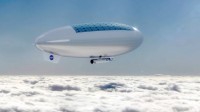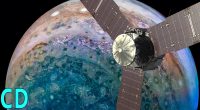On August 21st 2017, what being dubbed as the “Great American Eclipse” will take place on a path 2680 miles long that goes from the Oregon on the west coast to South Carolina on the east coast and will be the first total eclipse in the US to go coast to coast in 99 years.
The width of the shadow where the sun will be completely blocked by the moon is 70 miles wide and will travel across the land at over 1500mph.
For those on the ground, the time of totality will vary from just under 2 minutes in Oregon to a maximum of 2 minutes 44 seconds in Shawnee National Forest in southern Illinois but for a few the eclipse will last for over 7 minutes.
High above Tennessee, two scientists will extend the time of continuous observation by chasing the shadow of the Moon in a pair of modified WB-57 bombers. Armed with high-resolution and high-speed cameras, a team from the Southwest Research Institute (SwRI) and funded by NASA will aim to capture the first ever images of ‘nanoflares’: small explosions of energy that frequently take place in the Sun’s outer layers.
Because they fly at an altitude of 50,000 feet or 15 kilometres (just over 9 miles), the view from the WB-57s will be 20-30 times darker than on the ground, and free from most atmospheric disturbance. For the two scientists and their pilots, the eclipse will appear to last for over seven minutes as they fly Eastwards.
Each solar eclipse follows a different course over the Earth – dictated by the Moon’s position and Earth’s orbit around the Sun. This, in turn, influences the speed of the moon’s shadow across the Earth, and the length of time that each eclipse can be viewed at any point on the ground.
The longest eclipse for 12,000 years, from 4000BC to at least 8000AD will be on July 16th 2186. It will last 7 minutes and 32 seconds and will start over the eastern Pacific, move over the northern part of South America and over the Atlantic ocean.
A little over 44 years ago, on June 30th, 1973, the longest total solar eclipse in a thousand years was predicted to occur: with a maximum of seven minutes and four seconds of totality in Saharan Africa. This extraordinary astronomic event coincided with another fortunate circumstance: the world’s first supersonic airliner, Concorde, was nearing the end of its successful test program.
In 1972, British and French scientists recognised a special opportunity: for this eclipse, the path of totality would travel at speeds that could be matched by Concorde: just above Mach 2. By flying one of the prototype airliners South to join the path of the moon’s shadow, scientists should be able to observe the eclipse for over 70 minutes, 10 times longer than the longest on the ground.
Pierre Léna, a French astronomer, pitched the idea to one of the Concorde test pilots, who then suggested the possibility to his bosses at Aérospatiale, the French state-owned operator of the prototype jet. The idea was warmly received: it was an opportunity to show off the unique capability of the new aircraft.
The mission posed some challenges, however: because the eclipse would appear near the zenith – directly overhead – specialised quartz portholes had to be installed in the roof of the plane, able to withstand the extreme pressure and heat of supersonic flight. In addition, all scientific instruments had to be checked and modified to remove any risk of short-circuiting that might cause a fire in the pressurised cabin.
In February 1973 the flight was given the official ‘go ahead’, and five teams of scientists were chosen from Britain, France and America, to fill Concorde’s cabin with a variety of observational experiments. On the morning of June 30th, the supersonic airliner took off from Gran Canaria and turned to intercept the racing shadow of the Moon over Mauritania. There they followed it across the Sahara until they had to land at one of the few airports which had the stopping distance that Concorde required in Chad.
The mission was a success: Concorde 001 observed 74 minutes of ‘totality’, the longest-ever observation of a solar eclipse from the Earth. This record still stands and is unlikely to be broken anytime soon if ever. This is because currently there are no aircraft that can fly fast enough for long enough, even though there are military jets that can fly faster, they don’t have the long distance endurance of Concorde at supersonic speeds and they don’t have the room for the equipment.
In 1999, three concords, one French and two British flew filled with tourists instead of scientists and chased the moon’s shadow for a short time during an eclipse over Europe. However, further Concorde eclipse tours were cancelled after the crash of Concorde flight 4590 from Paris in July 2000. The Original modified Concorde can still be seen in its special livery at the Air & Space Museum, Le Bourget, North of Paris, France.
Today solar research is done mostly by dedicated space satellites like SOHO, the Solar and Heliospheric Observatory which creates it own artificial eclipse with the LASCO or Large Angle and Spectrometric Coronagraph instrument making airborne observations much less significant than in the days of the Concorde flight of 1973 but its legacy will still live on in the flight of NASA’s twin WB-57’s later this month.





